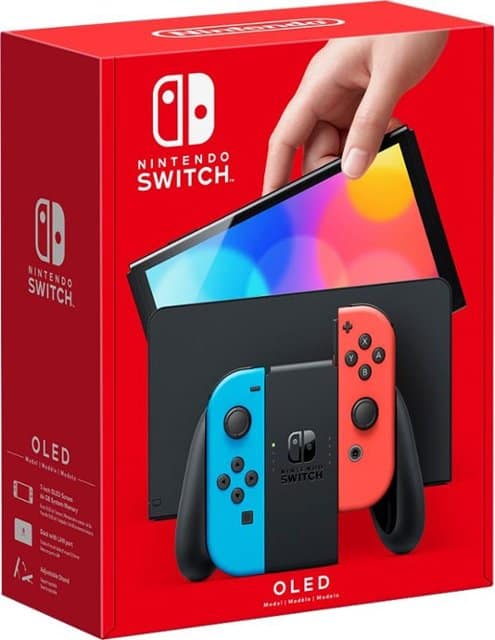OLED, which stands for Organic LED, is a display technology that produces brighter, crisper images, far beyond what LCD screens are capable of, by using “organic” carbon emitting layers instead of silicon or gallium, and you’ll be hearing about it a lot in the coming years as more manufacturers implement it.
On October 8th, Nintendo brought OLED technology to handheld console gamers with the Switch OLED. Boasting an incredibly vibrant 7-inch OLED screen, double the storage space, a full-length adjustable kickstand, thinner fan vents, and new built-in wired LAN ports on the docking station, the Switch OLED costs just $50 more than its predecessor and is compatible with all Switch titles and most older Switch accessories.
Key Features
The Switch OLED’s new docking station’s rear panel pops off completely, allowing easy access to the ports in the back. An Ethernet port replaces one of the three USB ports found in the prior iteration of the dock, but most gamers will consider that a small sacrifice to make in exchange for a wired internet connection (and thus, faster download speeds and better online gaming performance). With 64 GB of internal storage space (a massive upgrade from the prior model’s 32 GB), gamers will be able to store more titles and avoid having to buy an additional SD card.
When CNN Underscored tested the Switch OLED’s battery life, they were able to run an endless, eight-character battle on Super Smash Bros. Ultimate—with the brightness cranked to the maximum—for four hours and sixteen minutes. This will be an upgrade for people trading from a Switch Lite, which lasted three hours and fifty minutes in an identical test, and the launch Nintendo Switch, which made it a mere two hours and forty five minutes. It will be a slight battery downgrade for those who currently own the Switch 2019; that model tapped out at four hours and fifty minutes.
Needless to say, the Switch OLED has the biggest, most impressive display of all the Switch models, and that alone provides a compelling reason to upgrade. The built-in LAN ports on the docking station are also a huge bonus, but the improved, full-length kickstand (reminiscent of the one found on the Microsoft Surface Go) makes upgrading a downright necessity for gamers who often play in tabletop mode. Not only is the kickstand sturdier and less wobble-prone, it allows you to adjust the screen angle to suit your preferences.
So, is it worth it to upgrade? That depends on how you game.
If you’re mostly a handheld user, especially if you game in tabletop mode, then you might consider it worth the investment for the upgraded screen and full-length kickstand. If you’re an online gamer who plays in docked mode, the OLED screen may not benefit you, as the Switch OLED has the same processor and display resolution as prior models, but the new dock’s Ethernet port (and thus, the reduction in lag) could justify the cost of upgrading—a cost you can reduce significantly by selling your old Nintendo Switch to Gizmogo!
At Gizmogo it is easy to instantly receive a quote for your used Nintendo Switch! If the quote looks acceptable, package the device up, print out a complimentary shipping label, and drop the package in the mail. Once we receive it, our team will thoroughly inspect the device and provide you with an offer. Accept the offer and you’ll get paid by electronic transfer, check, or Amazon gift card within one business day!
At Gizmogo, our mission is to keep electronics out of landfills and prevent toxic chemicals from seeping into our environment by extending the lifecycle of devices and properly recycling those that can’t be refurbished and resold.


